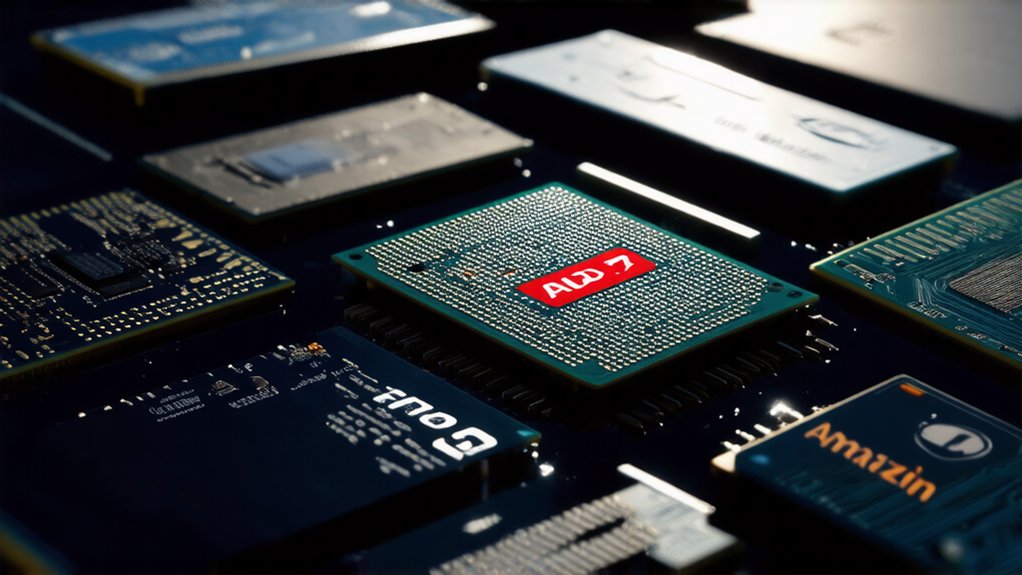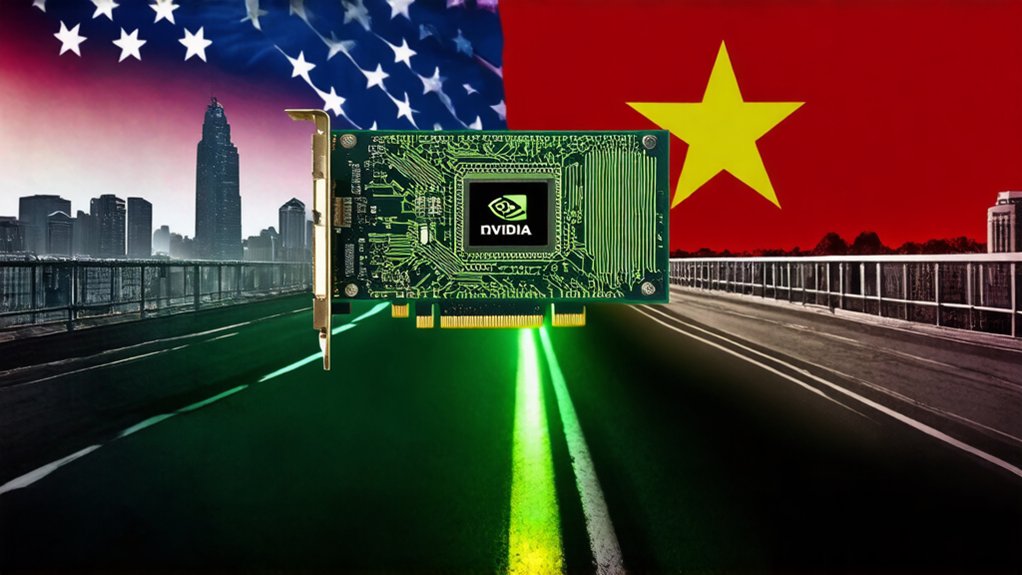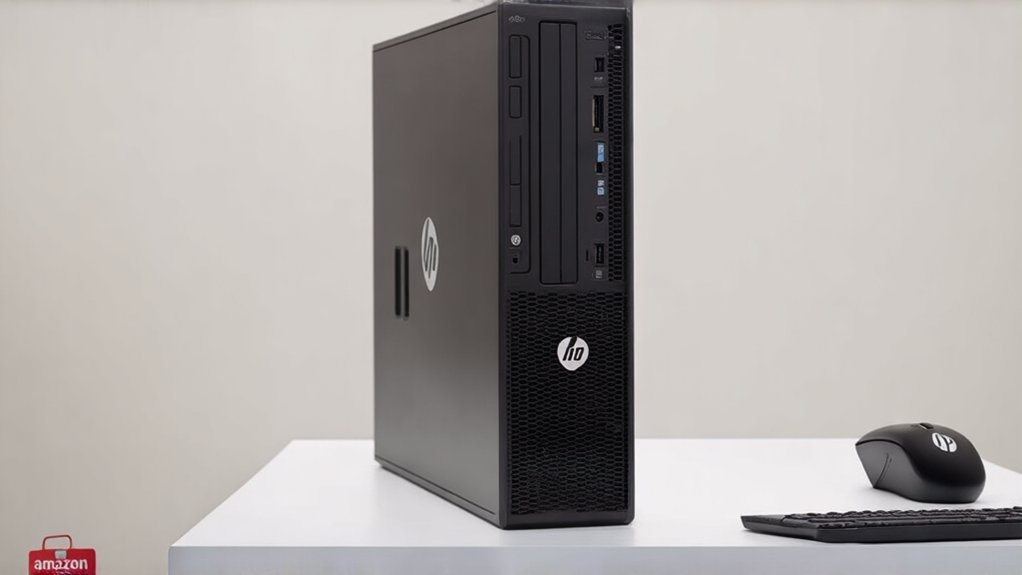While Nvidia currently dominates the AI chip market with an iron grip, several companies are positioning themselves to potentially dethrone the green giant by 2030. The competition is heating up, and it’s about time. Nobody likes a monopoly, right?
AMD isn’t messing around with its MI series GPUs. The MI300X packs a whopping 192GB of HBM3 memory, more than double Nvidia’s H100. They’re planning yearly releases, just like Nvidia. These new chips demonstrate z-score standardization capabilities for more efficient AI model training. They’re still playing catch-up at about 80% of Nvidia’s performance, but the gap is closing. Fast.
AMD’s MI300X packs double the memory of Nvidia’s H100, with aggressive yearly releases aimed at closing the performance gap.
Intel’s Gaudi 3 is making noise too. They’re going after Nvidia’s obscene profit margins with more cost-effective options. They claim faster training, better inference, and lower power consumption than the H100.
Bold claims, but they’re backing it up with projected AI chip revenue exceeding $1 billion in 2024. Not too shabby.
The cloud giants aren’t sitting idle either. Google’s TPUs, Amazon’s Trainium and Inferentia chips, and Microsoft’s “Athena” project are all designed to kick the “Nvidia tax” to the curb.
They’re tired of Jensen’s leather jacket showing up on their balance sheets. These in-house chips could slash AI computing costs by over 50%. That’s real money.
Then there are the upstarts. Cerebras with its massive Wafer-Scale Engine sporting 900,000 AI cores. Groq’s LPU Inference Engine. Tenstorrent. Graphcore.
They’re all taking shots at the champion with novel architectures and specialized designs.
Broadcom and Qualcomm are jumping in too. Qualcomm’s Cloud AI 100 chip reportedly doubles the efficiency of Nvidia’s H100 for server queries. AMD’s recent acquisition of ZT Systems adds 1,000 engineers to strengthen their AI system development capabilities. With the AI chip market projected to grow from $20 billion in 2020 to exceed $300 billion by 2030, there’s plenty of opportunity for these competitors to carve out significant market share. That’s not insignificant.




